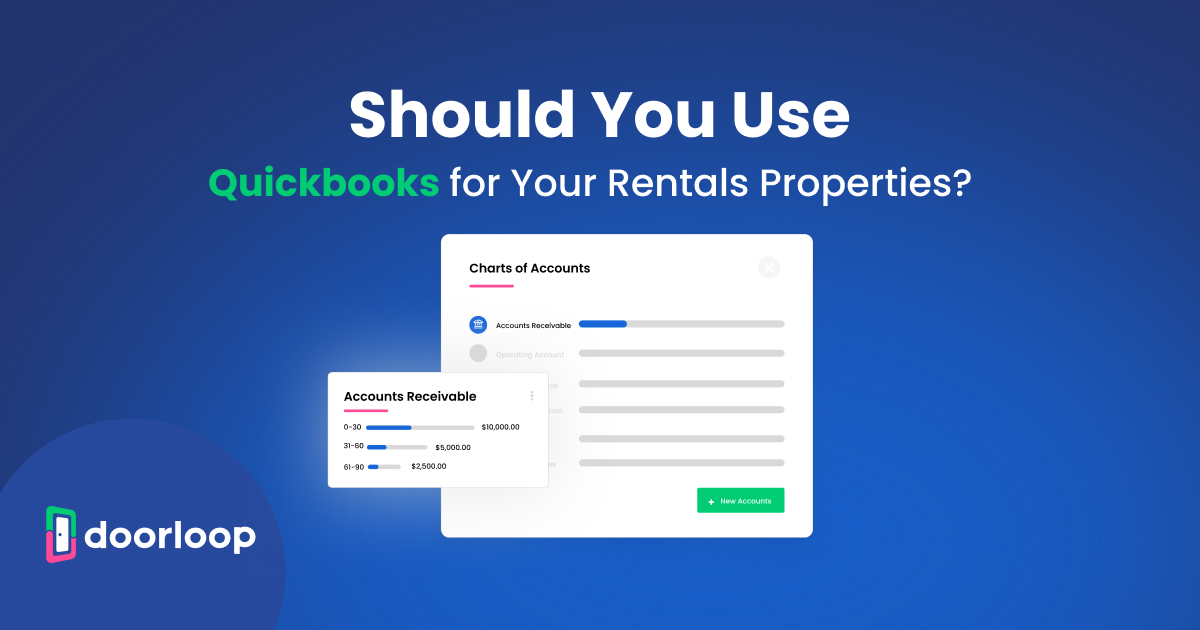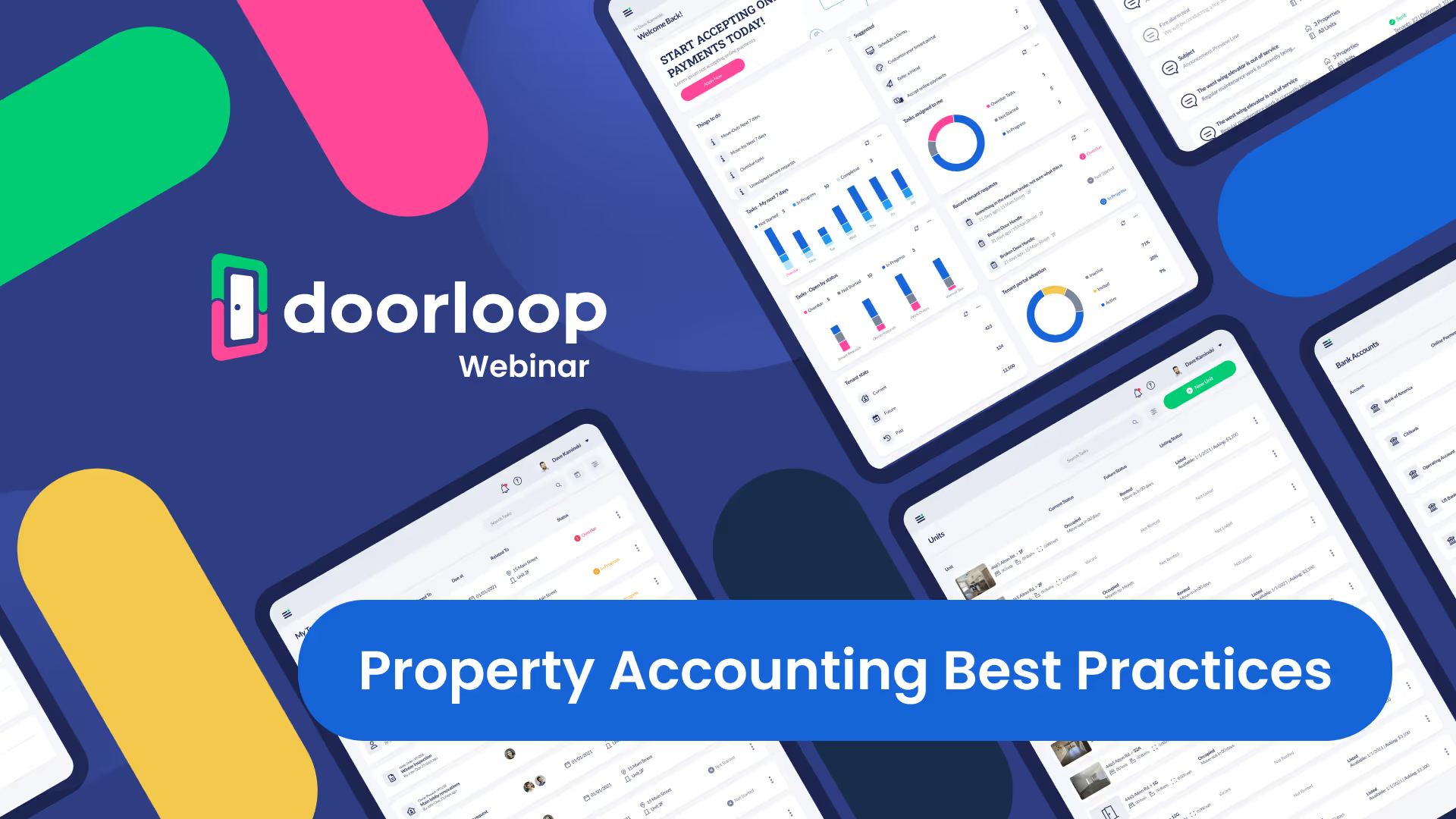Almost everyone who invests in real estate does so to generate an eventual profit, but figuring out exactly how much those profits are or will be is a little trickier than people think.
When it comes to selling your investment property, you may want to use a return on investment calculator to find out how much you will have earned.
What does return on investment mean for rental property owners, and what factors go into determining your profits? Get all the answers you need with this comprehensive guide.
To skip straight to finding your real estate ROI, try the DoorLoop Return on Investment Calculator now!
What Is Return on Investment (ROI)?
Return on investment (ROI for short) is the term given to the profit generated by a real estate purchase. Profit, in this case, means the money earned once you deduct all costs relating to the investment- including the initial purchase price, repairs, remodels, mortgage interest, insurance costs, and anything else you spent on the property.
An ROI calculator assumes the total profitability based on the figures you provide, but the actual return on investment cannot be fully realized until after the property is sold.
How Is Return on Investment Calculated for Real Estate?
In a nutshell, ROI is calculated by deducting the money you have invested in a property from its current market value or the sale price if you have already sold it. It is expressed as a percentage based on these figures.
There are two main methods used to calculate ROI in real estate- with the two resulting in very different numbers. Here are the details and calculations for both.
Cost Method
The cost method is the simpler way of calculating your return on an investment property. It uses a simple calculation to find the actual profit you have made so far.
To find ROI using the cost method, you use the following calculation:
Current market value - (Initial investment cost + additional contributions) = ROI
Your initial investment is the amount of money you bought the property for. Additional contributions include repairs, renovations, insurance, and other expenditures directly related to the investment.
In the simplest format, the calculation may look like this.
$300,000 market value - ($150,000 initial investment + $50,000 additional contributions) = $100,000 (33% return on investment)
You can also calculate return on investment this way by dividing the market value by the total investment- it yields the same results.
The cash method is the better option if you bought the property outright and want a simple picture of how much your property has appreciated from when you bought it.
If you have a mortgage on the property, it becomes a little more complicated to work out your additional contributions, as you need to take the interest rates into account to find out how much extra you have gained. You can find an example of this below.
Out-of-Pocket Method
Using the out-of-pocket method gives you a different view of your returns. Instead of looking at the original value, plus extra costs, compared to the current market value, it takes the home's equity.
Most real estate investors prefer this method if they took out a loan to buy the property. It yields a higher ROI because it only looks at the money you paid out-of-pocket into the property.
Let's take the same property (initial cost $150,000 with $50,000 additional expenses and a current value of $300,000). If you paid a $50,000 and took out a loan for the rest, that makes your total out-of-pocket investment $100,000 and the possible profit $200,000.
In this case, the calculation looks like this:
Potential profit $200,000 ÷ Current value $300,000 = ROI (66%)
As you can see, this results in a much higher ROI for the same property. This is because the loan amount has not been considered (known and using leverage to increase ROI).
Of course, when it comes to actually selling the property, if there is still a mortgage loan to be repaid, it will cut the actual return on investment down.
What Variables Affect Return on Investment Calculations?
Three primary factors affect return on investment.
How Much You Paid for the Property (Initial Investment)
The more your property costs initially, the less profitable it is likely to be. Unless you have made significant improvements (that didn't cost a fortune) or the housing market has changed dramatically since you invested, there is less room to pocket returns.
The Housing Market When You Sell
Housing market conditions are notorious for volatility in most parts of the country. Even in the more stable markets, the price you can get for a property can change from one month to the next.
A smart move by real estate investors is to follow market trends and aim to sell when inventory is low and demand is high. This creates what is known as a sellers' market, which is the best time to have a house listed as you can usually push for a higher asking price.
On the other hand, if you have no choice but to sell in a buyers' market (when there is ample housing availability and a lot of competition), you may have to drop the price and reduce your investment return in the process.
Mortgages
This fork has two prongs.
The first applies to your mortgage if you have one. Unless your mortgage is fully paid up, you will need to use your profit to clear the remaining balance before or when you sell. Also, if you consider the mortgage interest you have already paid as part of your additional expenditure, the return amount reduces again.
Mortgage rates for the buyers also impact your returns. When the fixed interest rate is high, people feel less inclined to buy. To encourage sales, many sellers need to reduce their asking prices to make it affordable. If they don't, they end up pricing out their buyers and getting stuck on the market.
Other Variables to Consider
Other factors that impact your actual profits include how much you spend on renovations, the cost of your insurance coverage, where your property is located, the expected inflation rate, and what additional costs you face during the sale of your property.
Examples of Return on Investment in Real Estate
Using the cost method:
.avif)
Using the out-of-pocket method:
.avif)
These returns look much higher, but there will be far greater expenses when you take the loan balance and interest into account.
ROI for Rental Properties
Returns work a little differently with rental properties since you are generating income that adds to how much you have earned back from your initial investment.
The calculation still works the same, but you would deduct your monthly or annual rental income from the total investment amount.
Leveraging ROI on Your Investment Property
The main way people utilize ROI in real estate and rental property is to find out how much profit they have made before they sell.
Some investors have a minimum ROI they want to hit before they will consider selling. This can be tricky, as the housing market does not always play along.
If you have a figure in mind, you can use an ROI calculator to figure out how much you can spend and what sale value you need to hit to reach your desired return.
You could use an ROI calculator to find out how much you would need to sell your property to meet your target- whether you are investing in a property to flip and sell or a rental property to generate income.
ROI calculations also apply to investments via mutual funds
What Is a Good Return on Investment in the Real Estate Market?
Ideal investment returns are not the same for everyone. Depending on your risk tolerance and balance in your investment account, your goal returns could be very different from someone else's.
There is no set minimum figure that is deemed a good return since properties and purposes vary so significantly. That said, most investors agree that the ROI should be higher than the average returns they would get on the stock market- which sit around 10%.
Returns on an upfront investment and mutual fund property investment are also very different- and it depends on the investment period.
Realistically, a good ROI for real estate is whatever amount the investor or owner feels happy with.
Limitations on ROI Calculations
It is important to remember that the ROI calculated may not be the actual number you are left with when all is said and done.
The calculator assumes only the numbers you give it- it does not take into account the post-sale costs. These may include advisory or brokerage services, compound interest, the balance of your mortgage, and closing costs.
Depending on the type of calculator you use, you may also only find your annual ROI as opposed to the return on your investment overall.
How Can DoorLoop Calculators Help?
DoorLoop calculators can help you manage your property investment portfolio in many ways. As well as providing an effective method for calculating returns on rental properties, it also shares a range of other great tools for streamlining your approach to your investment accounts and income.
Using DoorLoop is the best way to take your rental property business to the next level and gain better control over your real estate portfolio. It offers a robust all-in-one property management solution that makes life as a landlord more efficient, convenient, and successful.
Schedule a free demo today to learn more!
Summary
ROI is a simple concept with a lot of variables. You can calculate how much you have earned on your investment quickly and easily online- but remember that sale and post-sale costs will change the actual profit in your pocket.
































.svg)
.svg)

